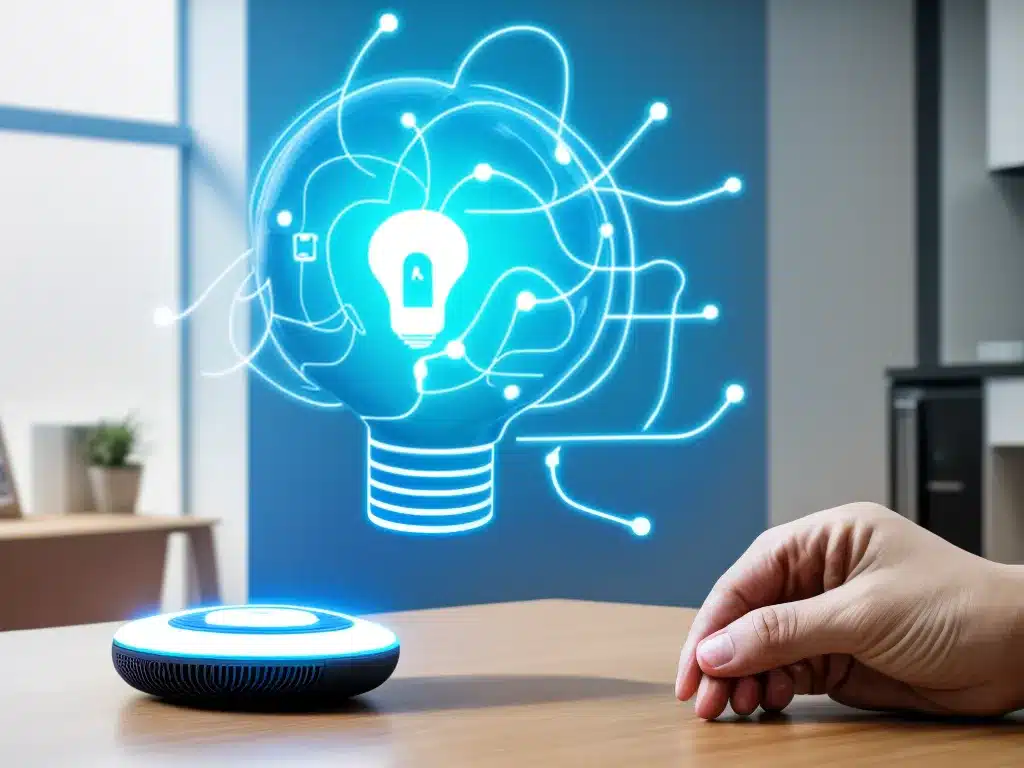
How AI and IoT Are Combining to Create Smarter Homes
Introduction
The Internet of Things (IoT) and artificial intelligence (AI) are transforming our homes into intelligent environments that anticipate and respond to our needs. As these technologies converge, we are seeing the emergence of truly smart homes that aim to make daily life more convenient, efficient, and enjoyable. In this article, I explore how AI and IoT work together in the home to create a more personalized and predictive living experience.
How IoT Enables Home Intelligence
The Internet of Things refers to the growing network of internet-connected devices that can collect and share data. IoT devices like smart thermostats, security cameras, appliances, and lighting systems are increasingly common in homes today. These devices are outfitted with sensors that monitor the environment, as well as connectivity that allows them to send and receive data.
IoT provides the sensory network that turns a standard home into a smart home. By gathering data on how the home is used, IoT devices create the information foundation needed for home intelligence. For example, a smart thermostat can monitor occupancy and ambient temperature, while smart lighting tracks room usage patterns. This data offers insight into how the home is lived in.
How AI Draws Insights from Home Data
While IoT devices collect home data, AI processes and analyzes that data to find meaningful patterns. Advanced machine learning algorithms can detect routines, preferences, and anomalies among the noise. This analysis uncovers key insights about the home and its inhabitants.
For instance, by processing sensor data, an AI assistant could determine that the living room lights are turned on each day at 6PM. It may infer that this signals the start of the evening. The assistant can use this insight to automatically turn on the lights at that time.
AI analytics enable the automation, personalization, and prediction that define smart home experiences. IoT data means little without AI to interpret what it means and respond accordingly.
Smarter Living Through AI and IoT
Together, AI and IoT transform homes into responsive environments that learn and adapt for each inhabitant. Here are some of the smarter experiences they facilitate:
Predictive Automation
Detecting usage patterns allows AI to automate home systems predictively, before manual interaction is required. The right settings can be activated at the right times, customized for your routine. For example, the ideal temperature can be set as you wake up, without fumbling with the thermostat.
Personalized Control
By analyzing behavioral data, AI can learn individual preferences for light, temperature, entertainment, and more. Control becomes more personalized instead of one-size-fits-all. Personalized scenes like “movie night” or “dinner party” can be activated at the push of a button.
Contextual Awareness
With data from various sensors, AI achieves better contextual awareness throughout the home. Systems know if someone is in a room before adjusting lights and temperature. Context also enables relevant notifications and recommendations, like displaying your calendar when you walk into your home office.
Predictive Maintenance
By monitoring appliance performance and usage, AI can predict potential issues before they cause problems. Smart systems can automatically order replacements for worn parts or schedule technician visits when needed.
Enhanced Security
AI video analytics provide more intelligent surveillance. Smart cameras can detect and alert on anomalies like unfamiliar faces or abnormal sound patterns. With deep learning, home security systems continuously improve.
Real-World Examples
AI and IoT are already combining to create smarter homes today:
-
Nest thermostats learn household temperature preferences and establish climate control schedules tailored for your routine.
-
Philips Hue smart bulbs detect when you enter a room and automatically turn on and change color to fit the time and mood.
-
Samsung Family Hub refrigerators suggest recipes based on contents, preferences, and expiration dates while monitoring food freshness.
-
Amazon Alexa Guard listens for smoke alarms, breaking glass, and carbon monoxide warnings and alerts your phone when detected.
Looking Ahead
As IoT devices become more prevalent and AI algorithms grow more advanced, our homes will gain impressive new abilities. We can expect smart homes that truly understand our needs and deliver hyper-personalized, predictive experiences. Technology will fade into the background, and the home itself will feel like an intelligent companion.












